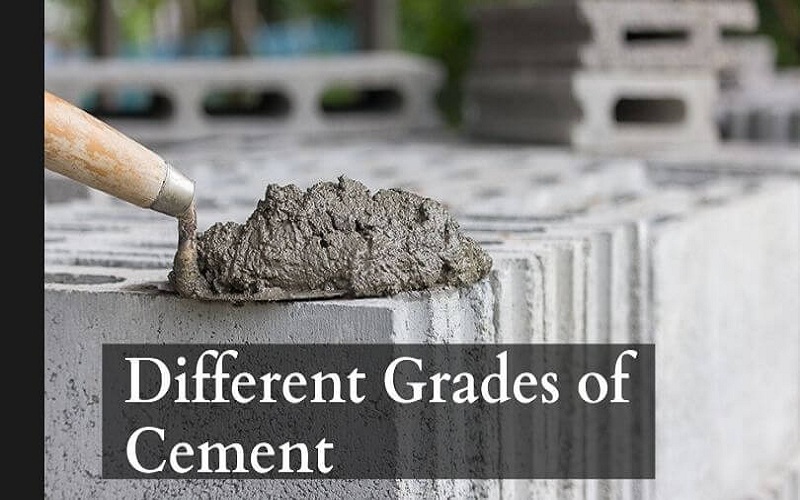When it comes to the world of construction, the selection of the right type of cement is paramount for achieving structural integrity, durability, and aesthetic appeal. With an array of options available, understanding the intricacies of different cement varieties is essential for decision-makers and builders alike. This comprehensive guide explores 5 types of cement and their uses. We will be taking a look at the characteristics, manufacturing processes, and practical applications of five fundamental types of cement.
It must be pointed out that there are several varieties of cement out there, but the exact types of cement and uses depend on your requirements for any particular project or application. We will be taking a look at five of the most common types of cement and uses out there. Moreover, with the number of cement manufacturers out there in this day and age, it becomes that much more important to associate with one that will be able to deliver the best results without burning a hole in your budget. So, let’s get started!
Ordinary Portland Cement (OPC):
Characteristics: Ordinary Portland Cement, or OPC, is the most widely used among the various types of cement and uses in the construction industry. It is composed primarily of clinker, gypsum, and small amounts of other additives. OPC typically contains about 95% clinker and 5% gypsum, with minor variations depending on manufacturing processes.
Manufacturing Process: OPC varieties of cement are manufactured by grinding clinker, a mixture of limestone and clay, along with gypsum, to a fine powder. This powder is then mixed with water to form a paste, which hardens over time through a process called hydration, forming a strong bond.
Uses: OPC types of cement find their uses in a multitude of construction projects, including residential buildings, commercial structures, bridges, and roads. Its versatility makes it suitable for use in concrete, mortar, and plaster, providing excellent compressive strength and durability.
Portland Pozzolana Cement (PPC):
Characteristics: Portland Pozzolana Cement, or PPC, is one of those varieties of cement and uses that features a blend of Portland cement clinker, pozzolanic materials, and gypsum. The pozzolanic materials, such as fly ash or silica fume, react with calcium hydroxide produced during hydration to form additional binding compounds, enhancing the cement’s strength and durability.
Manufacturing Process: PPC from a top cement manufacturer is produced by grinding clinker, pozzolanic materials, and gypsum to a fine powder. The pozzolanic materials are typically added to the clinker during the grinding process. The resulting cement offers improved workability, reduced heat of hydration, and increased resistance to chemical attacks.
Uses: PPC is favoured for applications requiring enhanced durability and resistance to aggressive environments, such as marine structures, dams, and sewage treatment plants. Its ability to mitigate the risk of alkali-silica reaction makes it suitable for use in concrete exposed to harsh conditions.
Rapid Hardening Cement:
Characteristics: Rapid Hardening Cement is designed to achieve high early strength development, allowing for expedited construction schedules. These varieties of cement contain a higher percentage of tricalcium silicate (C3S) compared to OPC, facilitating rapid hydration and early strength gain.
Manufacturing Process: Rapid Hardening Cement is manufactured by finely grinding clinker with a higher C3S content to finer particle size. This accelerates the hydration process, resulting in rapid strength development within a short period after mixing with water.
Uses: Rapid Hardening types of cement are ideal for applications requiring quick turnaround times, such as road repairs, precast concrete elements, and cold weather concreting. Its rapid strength gain properties enable early formwork removal and faster construction progress without compromising structural integrity. They are quite common among the 5 types of cement and their uses that we are referring to here.
Sulphate Resistant Cement (SRC):
Characteristics: Sulphate Resistant Cement, or SRC, is formulated to withstand exposure to sulphate ions present in soil or water. It contains a low percentage of tricalcium aluminate (C3A), which is susceptible to sulphate attacks, thus enhancing its durability in sulphate-rich environments.
Manufacturing Process: SRC is produced by grinding clinker with a low C3A content and additional additives to enhance sulphate resistance. The resulting cement offers superior resistance to sulphate ingress, ensuring long-term durability in aggressive environments.
Uses: SRC is indispensable for construction projects in regions with high sulphate content in the soil or water, such as coastal areas, industrial zones, and locations with saline groundwater. It is commonly used in foundations, basements, retaining walls, and underground structures to mitigate the risk of sulphate-induced deterioration.
White Cement:
Characteristics: White Cement stands apart from conventional grey cement due to its pure white colour, which is achieved by using raw materials with low iron content, such as limestone, kaolin, and white silica sand. These varieties of cement possess similar properties to OPC but offer superior aesthetic appeal.
Manufacturing Process: White Cement is manufactured using raw materials with minimal iron content to ensure a pure white colour. The raw materials are finely ground and calcined at high temperatures to produce clinker, which is then finely ground to produce white cement.
Uses: White Cement is primarily used for decorative concrete works, architectural finishes, and specialized applications requiring a pristine white appearance. It is extensively employed in the construction of terrazzo flooring, decorative facades, tile grouting, and sculptures, imparting a sense of elegance and sophistication to architectural elements.
Conclusion:
The selection of the right varieties of cement is crucial for ensuring the success of construction projects. Whether it’s the ubiquitous Ordinary Portland Cement or specialized varieties like Sulphate Resistant Cement and White Cement, each type offers unique properties tailored to specific project requirements. These 5 types of cement and their uses should give you a fair idea regarding some of the most common types of concrete that are employed by the construction industry in this day and age.
By understanding the characteristics, manufacturing processes, and practical applications of different cement varieties, decision-makers and builders can make informed choices to optimize project outcomes. Collaboration with a reputable cement manufacturer is essential to procure high-quality products that meet industry standards and project specifications, ensuring the durability, strength, and aesthetic appeal of constructed structures.





